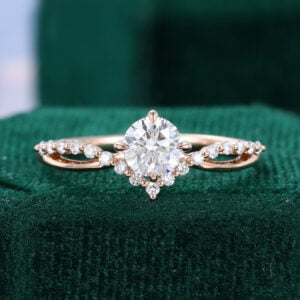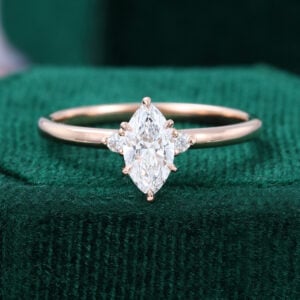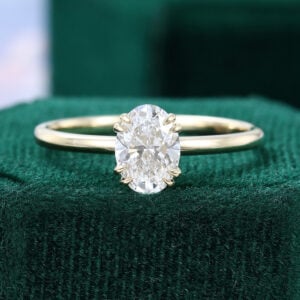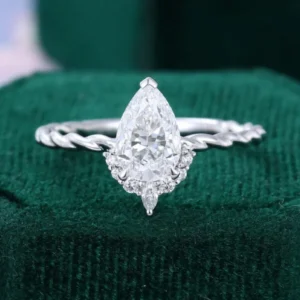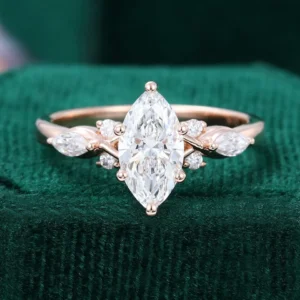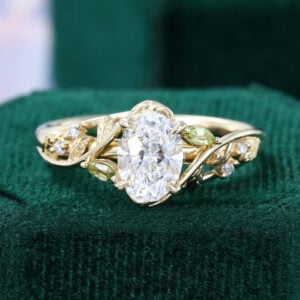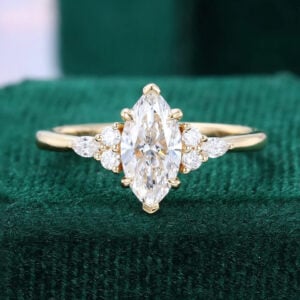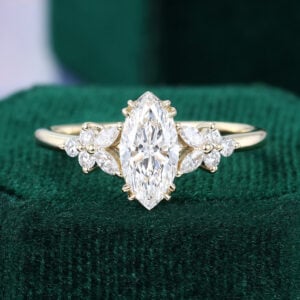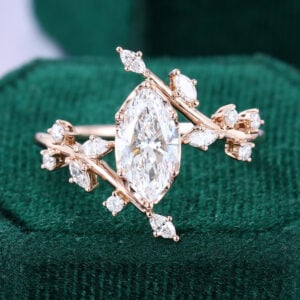- by MollyJewelryUS
- November 19, 2025
- Ring Journey
Finding an engagement ring that balances beauty, authenticity, and affordability is no longer as difficult as it used to be. Today’s buyers want one thing above all:
a real, stunning diamond ring—without the overwhelming price tag.
To help you navigate your options clearly, this guide presents an objective comparison between natural diamonds, lab-grown diamonds, and moissanite, then offers practical recommendations for choosing an affordable diamond engagement ring that actually fits your budget and values.
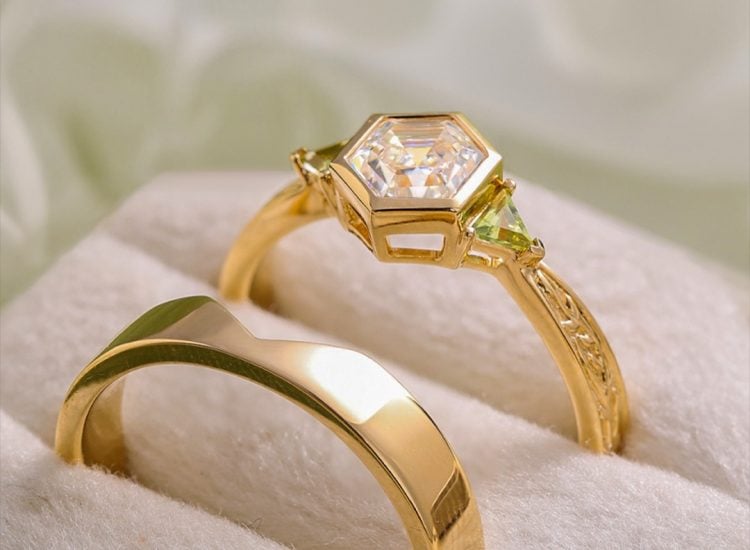
Table Of Contents:
What Counts as a “Real Diamond”?
Before comparing affordability, it’s important to distinguish what is considered a real diamond:
-
Natural Diamonds
Formed underground over billions of years; always considered real diamond. -
Lab-Grown Diamonds
Created in controlled laboratories but identical in chemical structure and sparkle to natural diamonds.
✔ Scientifically real diamonds
✔ Certified and graded the same way as natural diamonds -
Moissanite
Not a diamond. It is a lab-created gemstone with higher brilliance but a different chemical composition.
✔ Beautiful and durable
✔ Popular as a diamond alternative, not a diamond
Want a deeper look into Lab-Grown Diamonds? Read about Lab Grown Diamond Secrets.
Lab-Grown Diamond vs. Natural Diamond vs. Moissanite
Below is a clean, objective comparison that helps you see how these three stones differ:
| Feature | Natural Diamond | Lab-Grown Diamond | Moissanite |
|---|---|---|---|
| Composition | Carbon | Carbon | Silicon Carbide |
| Hardness (Mohs) | 10 | 10 | 9.25 |
| Sparkle | Classic diamond fire | Identical to natural | Very fiery, rainbow flashes |
| Price | Highest | 50–80% less than natural | Lowest |
| Long-Term Value | Strong resale value | Lower resale value | Minimal resale value |
| Ethics / Sustainability | Depends on mining source | Eco-friendly & conflict-free | Eco-friendly |
| Appearance | Timeless | Same as natural | Slightly warmer flashes |
| Best For | Tradition seekers | Affordable real diamond | Budget-focused buyers seeking alternatives |
When considering affordability, the cost gap is the most significant:
-
Natural diamonds remain the most expensive due to rarity and mining costs.
-
Lab-grown diamonds offer the best affordability for those wanting a real diamond.
-
Moissanite is the most budget-friendly option, but it should be considered a diamond alternative, not a diamond engagement ring.
This is why lab-grown diamonds dominate today’s affordable diamond engagement ring market.
Related:Moissanite vs. Diamond Price
All three gemstones offer excellent brilliance, but their visual effects and light refraction methods differ.
Natural Diamond: Known for its classic, deep white light and fire. Cut quality is the critical factor determining its sparkle. Goal: Seeking traditional and classic sparkle.
Lab-Grown Diamond: Visually identical to a natural diamond, offering the same classic fire. For the same budget, you can afford higher grades of cut and clarity, resulting in more stable, brilliant light. Goal: Seeking identical appearance with superior quality and size.
Moissanite: Has the highest “rainbow fire” (light dispersion). It reflects more rainbow light than diamond, creating a very intense and eye-catching visual effect. Goal: Seeking extreme sparkle/fire.
Which Option Is Best for Your Budget & Lifestyle?
| Budget | Natural Diamond | Lab-Grown Diamond | Moissanite | Best “Affordable DIAMOND” Option |
|---|---|---|---|---|
| <$800 | ❌ | ❌ | ✔ | not a diamond |
| $800–$1800 | ✖ | ✔ | ✔ | Lab-grown |
| $1800–$3000 | ✔ | ✔✔ | ✔ | Lab-grown |
| $3000–$8000 | ✔✔ | ✔✔✔ | ✔ | Lab-grown / Natural |
To explore more diamond alternatives, see our guide on popular diamond alternatives.
Our Top Affordable Diamond Engagement Ring Picks
Lab-grown diamonds give you the largest, highest-quality diamond within an accessible budget.

Why it’s great:
This set includes both the engagement ring and matching wedding band, making it an incredible value for buyers who want a cohesive look. The marquise shape creates a stunning centerpiece, while the contour band frames it perfectly. Excellent for practical shoppers wanting a full bridal set under $1,200.
Conclusion
Affordable diamond engagement rings no longer require sacrifice—you can have real sparkle, real quality, and real value without overspending.
By understanding the objective differences between natural diamonds, lab-grown diamonds, and moissanite, you can confidently choose the stone that aligns with both your budget and your lifestyle.
For most modern couples, lab-grown diamonds offer the ideal balance of beauty, authenticity, and affordability, making them the leading choice for today’s engagement rings.
FAQs
Are lab-grown diamonds real diamonds?
Yes. They share the same chemical, physical, and optical properties as natural diamonds.
Do lab-grown diamonds look different from natural diamonds?
No. Even gemologists need specialized equipment to tell them apart.
Is moissanite a diamond?
No. It’s a separate gemstone known for intense rainbow sparkle. Beautiful—but not a diamond.
What is the most affordable real diamond?
Lab-grown diamonds are typically 50–80% less expensive than natural diamonds of the same quality.
How can I save money on a diamond engagement ring?
Choose lab-grown
Opt for 0.7–0.9 ct instead of 1 ct
Select simple settings
Prioritize cut quality
Shop from reputable online retailers
